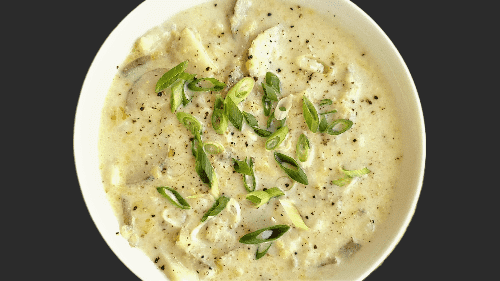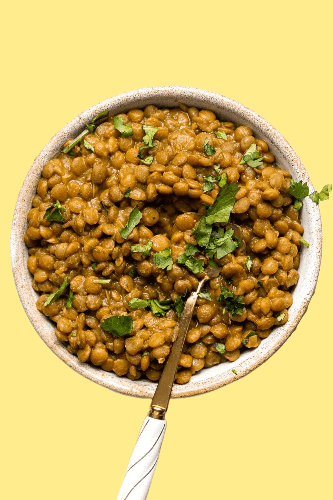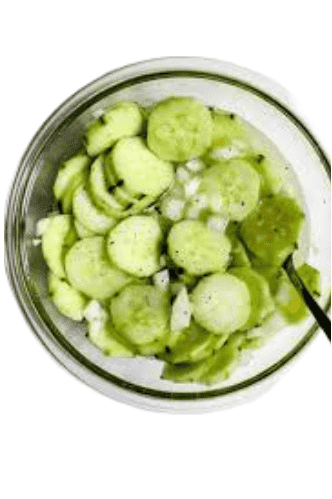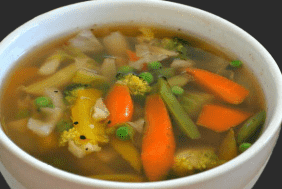Best Russian Salad
Introduction :
Before we dive into the recipe, let’s clear up a common misconception: Russian salad isn’t actually Russian.
The dish, often referred to as Olivier salad or салат Оливье (Salat Olivie) in Russian, is a classic of European cuisine, with its origins traced back to the mid-19th century Moscow. It was created by a Belgian chef, Monsieur Olivier, who owned the Hermitage Restaurant in Moscow.
The original recipe was quite different from the modern version, featuring ingredients like grouse, caviar, and lobster. Over time, the recipe evolved to accommodate more readily available ingredients, resulting in the dish we know today.
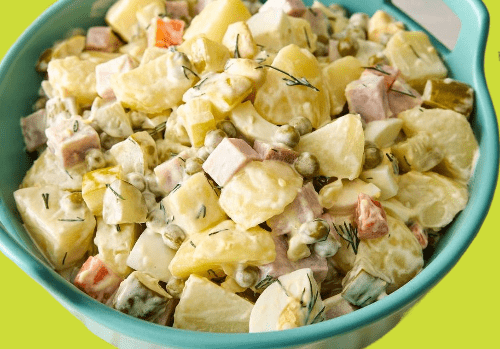
The Evolution of Russian Salad :
The Original Recipe :
While we won’t be replicating the original recipe due to its extravagant ingredients, it’s fascinating to understand its roots. The unique Olivier serving of mixed greens was a extravagant dish, reflecting the extravagant tastes of the time.
The Soviet Era Adaptation :
With the advent of the Soviet Union, food shortages forced a simplification of the recipe. The once-lavish salad became a staple on Soviet tables, made with more accessible ingredients like boiled potatoes, carrots, peas, and meat.
Modern Variations :
Today, Russian salad is enjoyed worldwide with countless variations. While the core ingredients remain similar, the additions and substitutions are endless.
The Classic Russian Salad Recipe :
Ingredients:
For the salad:
- 5 medium potatoes, peeled and cubed
- 3 large carrots, peeled and cubed
- 3 large eggs, hard-boiled and chopped
- 1 cup green peas, drained
- 1/2 cup corn kernels, drained
- 1/2 cup pickled gherkins, finely chopped
- 1/4 cup chopped fresh dill
- 1/4 cup chopped fresh parsley
For the mayonnaise:
- 2 large egg yolks
- 1 teaspoon Dijon mustard
- 1/2 cup white wine vinegar
- 1 glass neutral-flavored oil (like canola or grapeseed)
- Salt and pepper to taste
Equipment:
- Large pot
- Medium bowl
- Whisk
- Food processor (optional)
Instructions:
Prepare the vegetables:
- Cook the potatoes and carrots in salted boiling water until tender but firm. Drain and let cool completely.
- Hard-boil the eggs, peel, and chop.
Make the mayonnaise:
- In a medium bowl, whisk together egg yolks and Dijon mustard until smooth.
- Slowly drizzle in the white wine vinegar while whisking continuously.
- Gradually add the oil, whisking constantly until the mayonnaise thickens. Season with salt and pepper to taste.
Assemble the salad:
- In a huge bowl, combine the cooled potatoes, carrots, eggs, peas, corn, gherkins, dill, and parsley.
- Gently stir in the mayonnaise until the vegetables are evenly coated.
Chill and serve:
- Cover the salad and refrigerate for at least 2 hours to allow the flavors to meld.
- Serve chilled with your favorite accompaniments, such as black bread or toasted croutons.
Tips for the Perfect Russian Salad:
- For a richer flavor, use homemade mayonnaise or a high-quality store-bought mayonnaise.
- To speed up the cooling handle, put the cooked vegetables in a bowl of ice water.
- For a creamier texture, pass the salad through a food processor using a coarse blade.
- Experiment with different herbs, such as chives or tarragon.
- Add a touch of sweetness with a tablespoon of sugar or honey.
Variations on the Classic :
While the classic Russian salad is delicious, there are countless ways to put your own spin on it. Here are a few ideas:
Meat-Based Variations:
- Chicken Russian salad: Add cooked and shredded chicken for a protein boost.
- Ham Russian salad: Incorporate diced cooked ham for a savory twist.
- Seafood Russian salad: Use cooked shrimp or crab for a lighter option.
Vegetarian Variations:
- Vegan Russian salad: Use vegan mayonnaise and omit the eggs.
- Lentil Russian salad: Substitute cooked lentils for potatoes or add them as an extra component.
- Quinoa Russian salad: Use cooked quinoa as a base for a gluten-free version.
Flavor Variations:
- Spicy Russian salad: Add a pinch of cayenne pepper or a diced jalapeño for some heat.
- Herbaceous Russian salad: Increase the amount of fresh herbs or add a different variety like basil or mint.
- Sweet and sour Russian salad: Add a tablespoon of apple cider vinegar and a teaspoon of sugar for a balanced flavor.
Serving Suggestions :
Russian serving of mixed greens is a flexible dish that can be delighted in in numerous ways. Here are some serving ideas:
- As a main course with a side of bread or crackers
- As a side dish for grilled meats or fish
- As a filling for sandwiches or wraps
- As a dip for vegetables or chips
- As a party appetizer
The Cultural Significance of Russian Salad :
Russian salad, despite its name, holds a special place in the hearts of many cultures. It’s a dish that brings people together, evoking memories of family gatherings, holidays, and shared meals.
